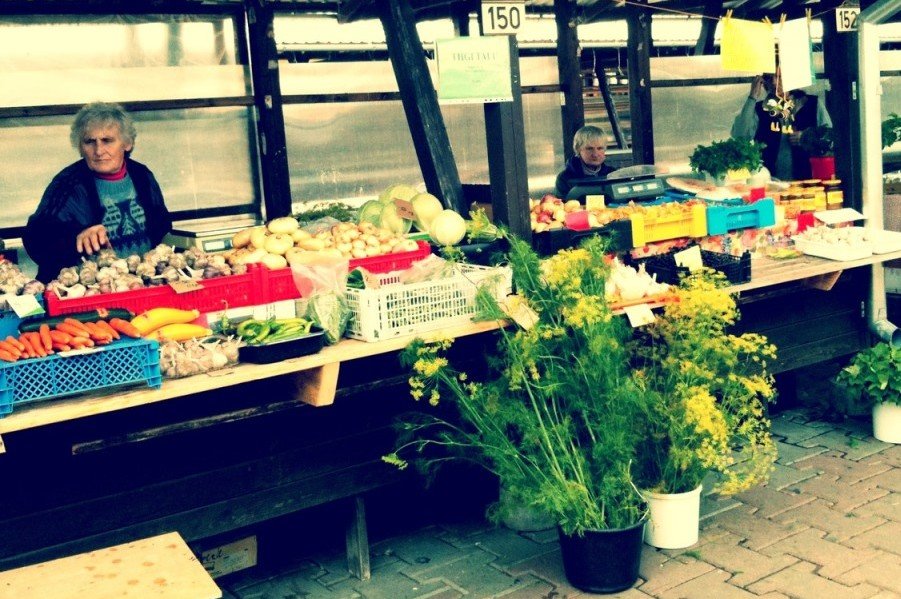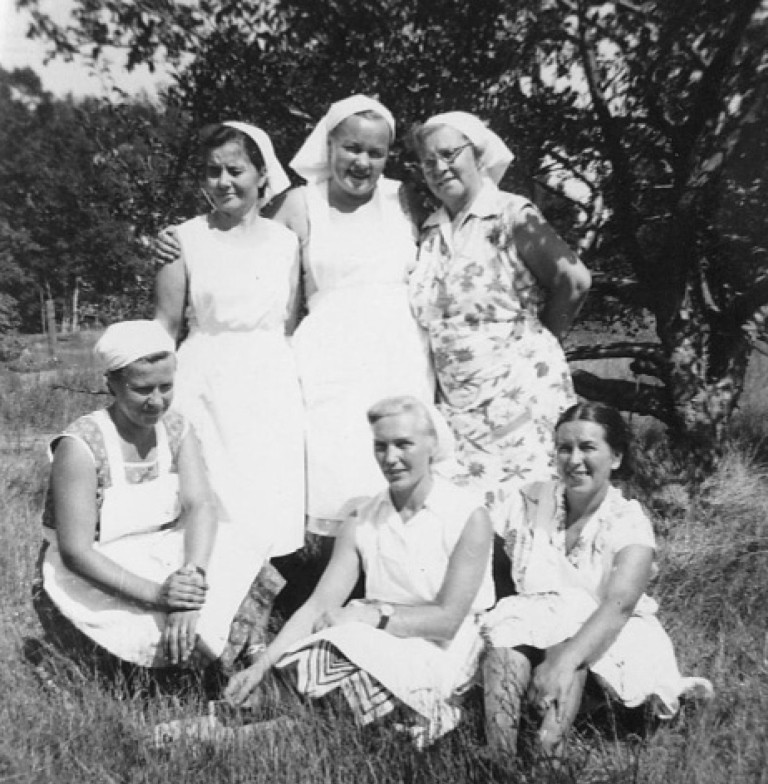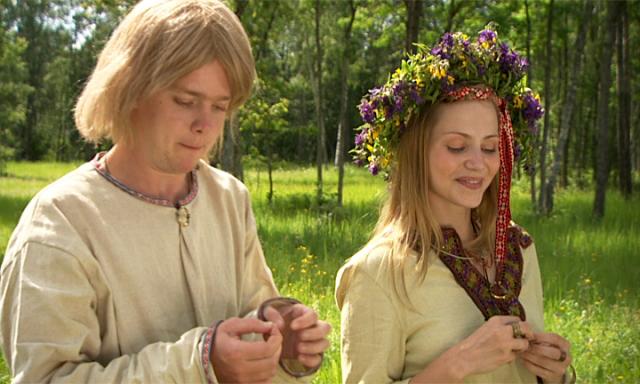Lisa and Kristen Dobbin are Estonian-Canadian sisters from Toronto. In 2012, they relocated to Tartu to try and become a little more like their Estonian grandmother. This is the second part in their series of articles, Lessons in Estonian culture for beginners. The first part can be found here and the third one here.
We both love to eat, and if we miss anything about our hometown of Toronto, it’s that on any given night, dinner might be Vietnamese pho, Italian pizza, Portugese BBQ chicken, Ethiopian tibs, or Caribbean roti.
When we moved to Estonia last year, we were excited to explore the national food culture, so we asked around for traditional recipes and restaurant recommendations. A few people told us that no “real” Estonian cuisine exists, suggesting that the country’s menu is a mere amalgamation – a mix of dishes and ingredients favoured by the Germans, Russians, Swedes, Danes and Poles, who, at various times in history, have ruled this tiny nation. As one friend put it, true Estonian food can be boiled down to “porridge, cabbage and dirt.”
Vanaema’s kitchen
We had always assumed that our grandmother’s menu was a reflection of her country’s cuisine. Vanaema (grandmother in Estonian – editor) was a great cook and spent her Canadian summers working in the kitchen at Jõekääru, the Estonian children’s camp in Udora, Ontario.
On Sunday evenings in Toronto, our family often gathered at vanaema’s bungalow-sized house, adjacent to a set of busy railroad tracks, where we’d be welcomed into a warm kitchen in full swing. Roast pork or cabbage rolls would be in the oven, producing an aroma that was somehow augmented favourably by vanaema’s lifelong smoking habit. Potatoes and vegetables would be boiling on the stove and sauerkraut or rosolje (a bright pink beetroot and herring salad) would be prepared.
At Christmas time, we’d eat two meals. After the usual meat and potatoes feast, we had traditional Estonian blood sausages – verivorst (which we called “very worst” as children!). On Christmas Day, we were served small, crepe-style pancakes with maple syrup and jam. Our favourite pastry – kringel (which is usually braided and tastes like sweet egg bread with raisins and slivered almonds) – went with evening coffee, alongside homemade apple pie and sugar donuts. Vanaema usually sent us home with deep-fried pork and rice perogies, along with a week’s worth of leftovers.
Self-deprecation
Here in Tartu, we’ve been happy to discover perogies that taste just like vanaema’s and familiar salads like rosolje at the outdoor market. A local hotel restaurant prepares chicken soup with a hefty serving of dill, making it almost identical to the soup we were served as kids. When hosted by friends and relatives, we’ve eaten cured and smoked fish, hearty pork and potato dishes, and kringel for dessert. Both sweet and savoury pancakes, crepe-style just like vanaema’s, are easy to come by. So if no Estonian national cuisine exists, what was our grandmother cooking for us all those years? And why are those very same foods on offer here?
While we wondered how we should define Estonian food, we were devouring Estonian film. As fans of idiocy (we memorised every line of Mel Brooks’ Robin Hood: Men in Tights at a young age), we especially enjoyed the Estonian historical satire Malev, or “Men at Arms” (2005). The film has a Monty Python and the Holy Grail feel to it, and portrays 13th century Estonians as backward simpletons who can’t seem to get their act together.
One scene shows Estonians marching onto a battlefield, singing and strumming, armed only with their love of music. This fictional battle references the great peaceful protest of the Estonian people, called the “Singing Revolution” (1987-1991). Over this four-year period, Estonians began to publicly sing national songs that were banned by their Soviet occupiers. Although in Malev, the Estonian troops were crushed by their opponents, in real life, the attention garnered by their mass sing-a-longs helped the country win its struggle for independence.
The Malev battle scene (or should we say musical performance?) clued us into a style of humour that we’d missed in trying to understand Estonian food culture. Self-deprecation is the name of the game here, and we’ve started to notice that many Estonian films and other art forms reflect this specific form of humour.
Our Estonian language teacher recently showed us a YouTube video called “A Tourist Guide: Estonia according to Estonians”, in which the narrator takes his viewers on a virtual tour of Estonia, using a map drawn in MS Paint. The audience is informed that nearly every location in the country is “not recommend”: some areas are “too weird”, there are “too many people” in the capital city, the academics in the university town “want to be left alone” and the onions along Lake Peipsi will “make you cry”. The narrator ends the video by imploring potential visitors to “go to Finland or somewhere”.
Though it’s rife with sarcasm, this tourist guide actually pays homage to Estonia’s surprisingly diverse regional cultures and histories, an important element of the country’s national identity. Similarly, Malev’s battle scene highlights the barely believable feat of community that produced a political revolution through song.
In light of these satirical takes on Estonian culture we can’t help but feel that those who play down the country’s food traditions demonstrate a comparable form of cultural pride, one which is heavily tempered by modesty. So if you happen to cross paths with an Estonian, be warned: they know how to keep a straight face, even when the joke’s on them.
I
Cover: Vendors at Tartu’s outdoor market (image by Lisa Dobbin).




I have an Estonian cook book back home (in Est). It’s full of disgustingness and you can tell, that Estonians have been very poor. But yes, there are true Estonian dishes. Meat dishes are made of the worst parts of an animal (brains, tails, ears, feet).
Mmmm.. no, it’s called resourcefulness. Those pig parts aren’t the worst parts, there are loads of good nutrients in those parts as well, besides if you know what you are doing, you can make these things taste yummy (like they would have). And unlike many people these days, Estonians didn’t like to WASTE FOOD. That is just a crime… and it should be like that everywhere.
You missed my point. If you know the history of Estonians, you know that they were slaves. What I meant by Estonians eating “the worst parts” was what Canadians would consider the worst parts. I love that food. That wasn’t even the case. But the history behind Estonian food is not about resourcefulness, it’s about what they were given by their landlords and you can guess who ate the “good parts” (again, considered by Canadians and the rest of the western world). I worked in a manor in Lahemaa and there was a lecture about what the Landlords ate and what the simple people had to eat. Now what your grandmother made you was german and russian food. But since they are such a huge part of our history you can consider that Estonian food. I love that food. It will always be my childhood comfort food. Thought you were wondering what Estonian food was and the food that you ate, so I answered that. Most of the food in that cook book sounds super disgusting and you should read it! It’s sort of funny! Not too many people make that food these days for a reason!
– from a great-great-great…great grandchild of real Estonian slaves from Võrumaa 🙂
I would like to argue the word – slave! Estonians were never slaves, they were in bondservice (or they were under the yoke of serfdom). What is different from slavery is that they could marry according to their will, own personal assets (property).
Serfdom was common in France,Germany,UK in 12-13 c. and most of the peasants were under the yoke. In eastern Germany serfdom was especially strong in 16 – 18 centuries, in France 7% of people were still in serfdom in 1789. Therefore it is not so strange that in Estonia, where the landlords were mostly German, the same system worked and we could say that our kitchen is german type and the ways were similar to the ones in Germany.
I must mention that there is something very special in EStonia: black rye bread, estonians even called all other food ‘bread companions’
More http://www.maaturism.ee/index.php?id=kook_engreading about Estonian kitchen:
Jätk
Well, during the end of the 18th century my great-great-great-…-great-grandfather was bought from a near-by manor for a pair of hunting hounds to be a servant and an husband for my great-…-great-grandmother, who was also a servant.
Because she was carrying the manor lords child, he gave a plot for them in a small valley in Ridala parish in Estonia and there a branch of my ancestors lived until the second world war.
So, if you can sell and buy a person for a pair of hounds, then it is slavery. That kind of “shopping” for serfs happened quite a lot (although at much larger scale elsewhere in Russia) and an ordinary estonian had very little rights compared to freemen and germans. Also marriage and property could still be controlled by the landlord – de facto rights of the strong and powerful and privileged.
Of course one cannot equalise this with the kind of slavery that black slaves had to suffer in Americas or white slaves in Northern Africa, at that time, but this comparison remains a question of differences in degrees of oppression, cruelty, viciousness, poverty, racism, exploitation, etc.
Kama is great, especially with soured milk (kephir) and something sweet 🙂
On Soviet time we hadn´t any meet in the shop! We were glad if we got these “worst” parts to make some food with. All meet went to Moscow and St. Peterburg. One writer told, that in the shop was left just the pigs scream…..nothing else! So we can say that estonians thru all these some hundred year learned to make tasty food “from noting”. 🙂
I LOVE the smell of cabbage rolls and cigarettes. Nice work Dobbins!
So good. Made me hungry. But wait, who is eating the dirt?!
Looks like the link to the last video is wrong, should be http://www.youtube.com/watch?v=f1M-7_GhfD4
Thanks, the correct link has been provided now.
I agree with those people saying that no real Estonian national food exists, as all those things you mention in your blogpost, we took over from some other national cuisine and at times, slightly modified it. You can find all those things in neighbouring countries or even in Germany and very often, even the names of those dishes are just Estonized versions of their own words. Of course, since Estonians eat all those things for a very long time already, it is still Estonian national food but not in the sense that it would be unique or ‘invented’ by us. Since I am an Estonian living abraod, a lot of people ask about my country and national food and you cannot imagine the looks when I say that we borrowed all our cuisine from somewhere else. A good excuse to refuse to cook Estonian food for them, though :)) After research on the internet on different dishes and ingredients, the only truely very Estonian thing I found was KAMA, though not a meal on its own, its still something very special and as far as I know, only eaten in Finland besides Estonia.
I don’t know if it is real or not but I loved EVERYTHING I ate there!!!!!!